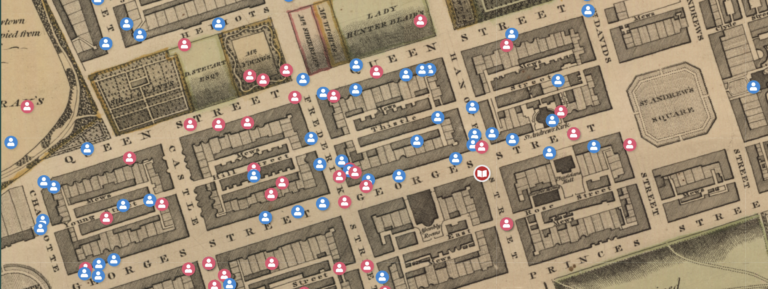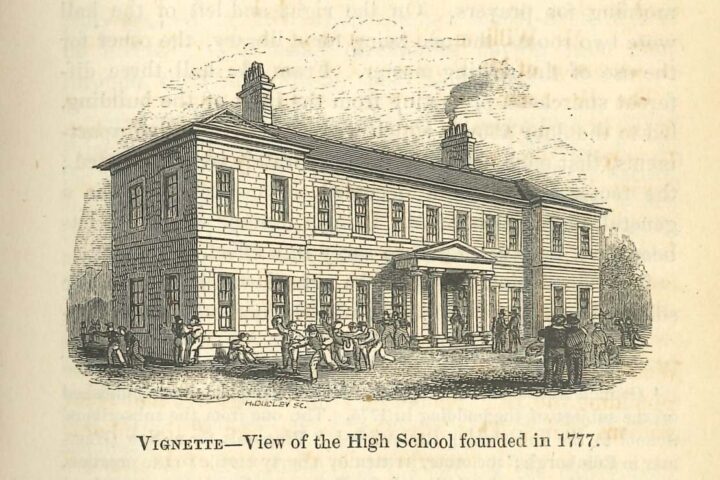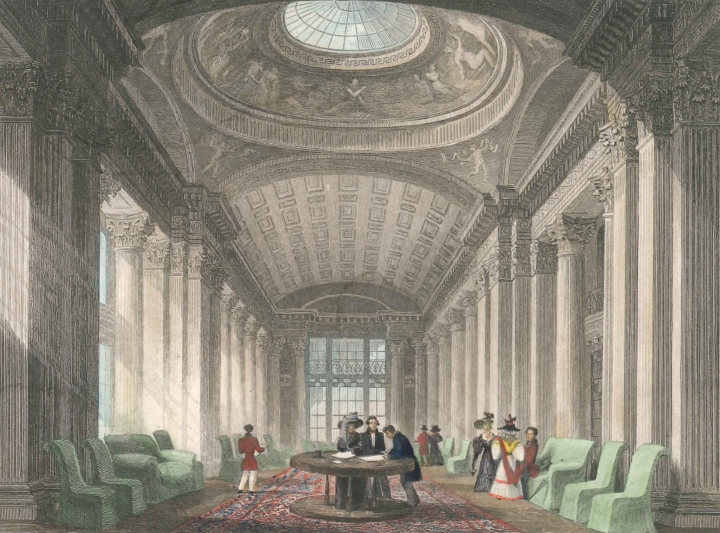Unlike institutional libraries, circulating libraries were business ventures that aimed to turn a profit. Robert Chambers ran a circulating library in the late 1820s. His library attracted borrowers from Edinburgh's wealthy New Town with a central location and stock of freshly published books and periodicals. Chambers, with his brother William, went on to found the world-famous W. & R. Chambers Publishers. This is a rare example of a circulating library whose borrowing records have survived.
Libraries of Edinburgh

Edinburgh offered a wide range of access to libraries by the mid-eighteenth century. Institutional establishments such as the University’s Library, the library of the Royal High School, and the Advocates Library were well-established. Books were also available from shops and circulating libraries.

The expansion of disciplines studied at the University in the eighteenth century resulted in growth for its Library. Professorships in belles lettres, law, moral philosophy, and history and the establishment of the medical faculty saw the acquisition of books to support the curriculum. Professors and medical students were the most active users of the collection. By 1815, the Old Library contained 50,000 volumes. William Playfair’s neoclassical replacement had space for 150,000 books and served as the Library from 1827 until 1967.
|

The library at Edinburgh’s Royal High School was established in 1658. The school’s move to High School Yards in 1777 included a purpose-built library. The school’s borrowers’ records survive from the 1770s and give a unique insight into children as a distinct group of readers with a need for their own literature. This is shown with the borrowing and acquisition of works aimed at child readers - most notably John Newbery’s World Displayed (1759).
Listen below to hear modern student Mark Pashley describe The World Displayed and read one of the adventures from this work, which was enormously popular among eighteenth-century Royal High School students.
|

The Advocates Library came into being in the 1680s when the Faculty of Advocates started collecting books useful for lawyers in practice which included not just law, but related disciplines. The library served as a national library for Scotland until 1925 when the National Library of Scotland was established.
Edinburgh advocates formed an elite professional class and were leaders in society. Many are remembered for other contributions than legal practice, such as the authors James Boswell and Sir Walter Scott.
Listen below as Katie Halsey (University of Stirling) introduces James Boswell’s relationship with the Advocates Library and James Caudle (University of Glasgow) reads extracts from Boswell’s Edinburgh journals.
|
Listen to Matthew Sangster (University of Glasgow) read the beginning of Edward Bulwer Lytton’s Paul Clifford of 1830, including one of the most famous first lines in literature. This was one of the most popular novels at the Chambers’ Circulating Library.
